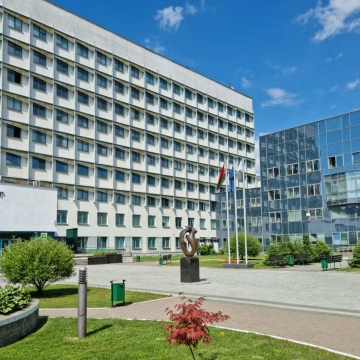
Atrial fibrillation (AF) is the most common form of arrhythmia, in which the atria contract chaotically and irregularly. This condition can cause fatigue, shortness of breath, palpitations, and increases the risk of stroke. Treatment is aimed at restoring normal heart rhythm, preventing complications, and improving the patient's quality of life.
Main goals of treatment
- Heart rate control. Slowing down your heart rate to reduce the strain on your heart.
- Restoration of sinus rhythm. Return of normal heart rhythm.
- Prevention of blood clots. Reducing the risk of stroke and thromboembolism.
- Treat the underlying cause. Control conditions that cause arrhythmia, such as hypertension, valvular heart disease, or hyperthyroidism.
Atrial fibrillation in Belarus
Drug treatment
- Heart rate control medications. They slow the heart rate.
- Cardiac glycosides. Used as an adjunct to control heart rate in elderly patients.
- Drugs for restoration and maintenance of sinus rhythm.
- Anticoagulant therapy. To prevent blood clots.
Cardioversion
- Electrical cardioversion. The use of a controlled electrical shock to restore sinus rhythm. Used when drug therapy is ineffective.
- Drug-induced cardioversion. The use of antiarrhythmic drugs to restore normal rhythm.
Catheter ablation
- Radiofrequency ablation (RFA) is the destruction of pathological lesions or sections of the conduction system that cause arrhythmia. It is especially effective for patients with paroxysmal AF.
- Cryoablation. The use of cold to isolate the pulmonary veins, which are often the source of arrhythmia.
Indications for ablation
- Ineffectiveness of drug therapy.
- Frequent recurrences of arrhythmia.
- Intolerance to antiarrhythmic drugs.
Implantation of devices
- A pacemaker is installed for slow heart rate or sick sinus syndrome.
- Implantable cardioverter-defibrillator (ICD) . Used in patients at high risk of life-threatening arrhythmias.
Surgical treatment
- Labyrinth surgery. A surgical procedure to create scars in the atria that block abnormal electrical impulses. Typically performed during open-heart surgery (such as valve replacement).
Minimally invasive (interventional) procedure
- Implantation of a left atrial appendage occluder for thromboembolism prevention in patients at high risk of stroke and contraindications to anticoagulants.
Lifestyle and prevention
- Physical activity. Moderate exercise (walking, swimming) is beneficial for improving heart function.
- Diet. A diet low in salt, fat, and sugar, rich in fruits, vegetables, and whole grains.
- Blood pressure and weight control. Reducing excess weight and controlling hypertension reduce the risk of AF recurrence.
- Quitting bad habits. Smoking and excessive alcohol consumption increase the risk of arrhythmia.
- Stress management. Use relaxation techniques such as meditation and yoga.
Results of the operation
- Symptom control. For most patients, symptoms are significantly reduced or eliminated.
- Reducing the risk of stroke. With properly selected anticoagulant therapy, the risk of stroke is reduced by 60–70%.
- Life expectancy. With adequate treatment and risk factor control, patients with AF can live long and fulfilling lives.
Atrial fibrillation requires a comprehensive approach aimed at rhythm control, thromboembolism prevention, and addressing the causes of the arrhythmia. Modern techniques, such as catheter ablation and anticoagulation, significantly improve the prognosis for patients. Regular monitoring by a cardiologist, adjustments to therapy, and a healthy lifestyle help maintain a stable condition and reduce the risk of complications.

